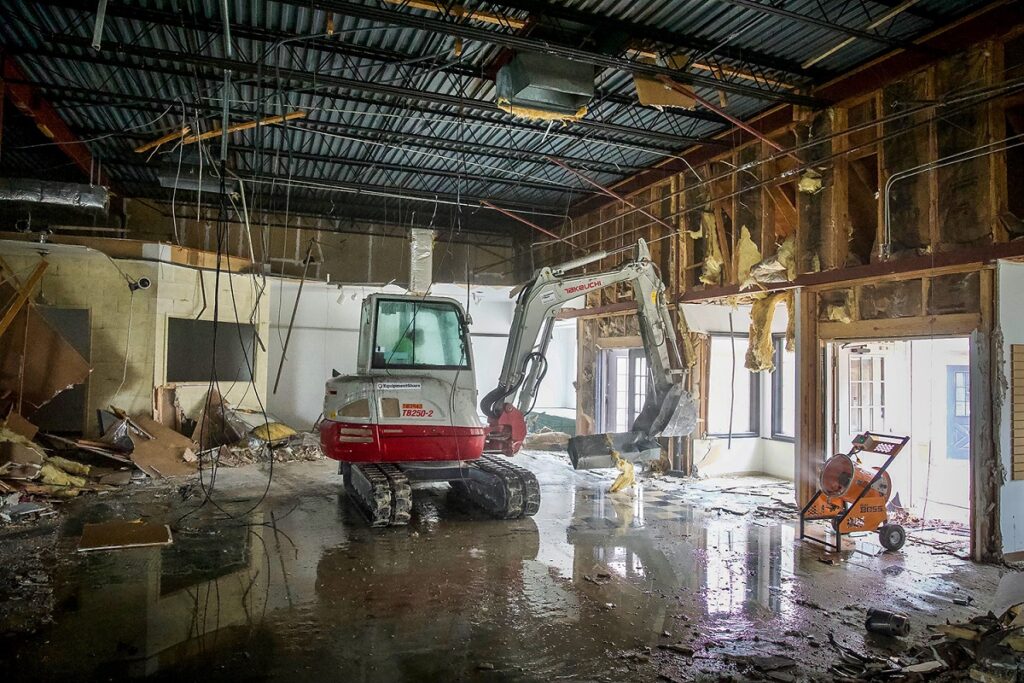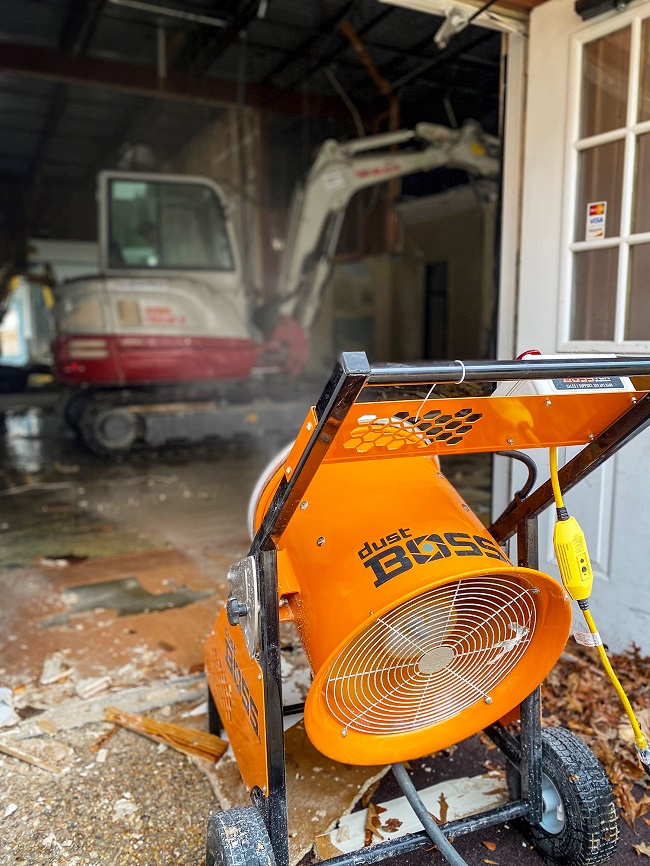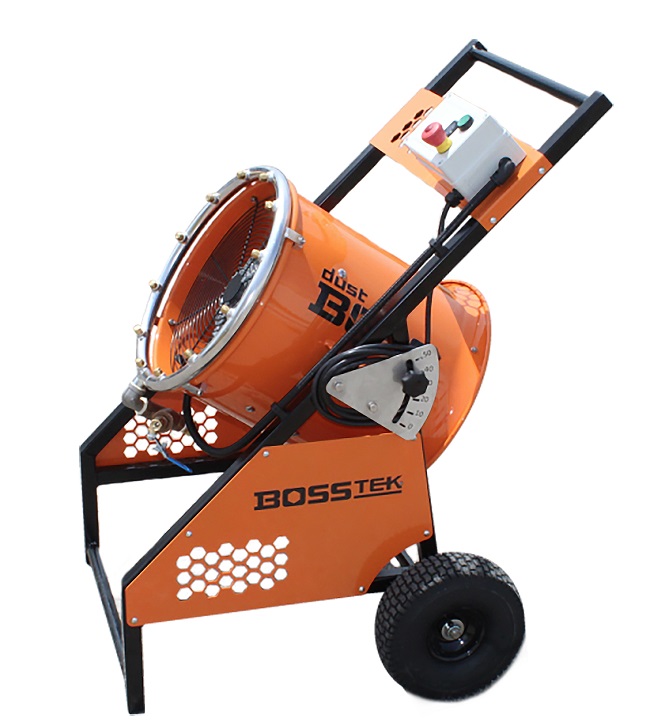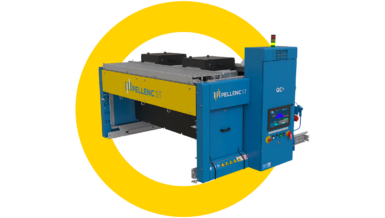Engineered for enclosed working environments, the easily maneuverable unit provides excellent suppression in a compact, portable design. The outcome is effective airborne particle control with fewer emissions, less standing water and a safer, more compliant workplace.
“Our customers are well-acquainted with our technology, but before the DB-10, the smallest machine could nearly cover a football field, which is far too powerful for most indoor applications,” said Mike Lewis, Dust Control Specialist at BossTek. “Our first customer to use the DB-10 was a demolition contractor removing dusty drywall, plaster and tile containing potentially hazardous materials. These all produce highly regulated dust emissions. We worked with them to create a unit best suited to their needs and the DB-10 was born. They are extremely happy with the outcome.”
The compact mist cannon is mounted on two wheels with a tall handle. Similar in size to a child stroller, it is light and easy to maneuver, while still offering industrial-level dust control. A ¾ HP fan delivers 3335 CFM of airflow, powered by 120-volt current. Mounted on the front of the cannon is a circular manifold with 12 atomizing nozzles that fracture pressurized water into a fine mist. About as loud as a hand-held hair dryer, the fan forces air through the barrel then pushes millions of tiny droplets in a cone-shaped pattern up to 30 feet (10 meters). Using the 0-50º vertical adjustment, the mist can reach into the rafters of warehouses or be directed at specific emission zones. It is offered with a standard wheeled carriage but can be specified with alternate mounting as needed.


Atomized Mist
Beyond space constraints, the DB-10 solves several issues associated with dusty indoor operations. During indoor demolition, for example, harmful dust can fill the area and drift across the site line, creating a violation, but atomized droplets stop dust at the point of emission. Workers are often assigned to use hoses for small-scale dust suppression, which adds to the labor cost, whereas the DB-10 requires no labor to run. Moreover, being in proximity of large machinery and falling material can be hazardous to personnel.
One driver of the new design is the fact that hoses create droplets up to 100x larger than atomized mist, far too large to capture airborne particulates. They can use up to 100 gpm of water, causing excessive standing water and runoff, a potential hazard. The DB-10 addresses all these issues.
“The dust emissions from indoor demolition or concrete cutting and breaking can create tiny particles that you can’t see,” Lewis pointed out. “These can get deep into your lungs and cause serious breathing issues, but the mist droplets are small enough to capture individual particles at the moment of emission and drag them to the ground.”
The DB-10 produces droplet sizes of 50-95 microns in size, roughly the same as the cross-section of a single human hair. This is important because regulators test for respirable dust 10 microns or less, like those found in indoor demolition. The slipstream created by droplets greater than 200 microns in size can deflect tiny respirable dust particles, rather than absorbing them. That’s why hoses are generally not effective against airborne dust. Using less than ¼ of the water volume of a handheld 1 in. (25.4 mm) hose, the DB-10 fills the area with a dust-trapping mist that stops particulates from remaining airborne or migrating away from the area. The wide area of distribution and gentle settling reduces the chance of pooling and runoff.


Case Study
A demolition contractor was recently performing an indoor demolition and found that disruption to storage piles of recycled material was causing airborne dust emissions. Although piles could be covered at night, activity during the day was causing particles to drift into neighboring communities. An onsite demonstration of the DB-10 showed the contractor that the atomized mist pulled the dust out of the air at the point of emission, preventing it from traveling across the site line. The fog cannon effectively controlled both airborne and ground-level particles with no runoff or puddling. This resulted in the contractor purchasing two machines for different projects.
“Watching these units in action under actual working conditions reveals how the dust falls to the ground and stays there,” Lewis concluded. “This approach to particulate control will give operators more flexibility and mobility to respond to dust causing conditions.”


















